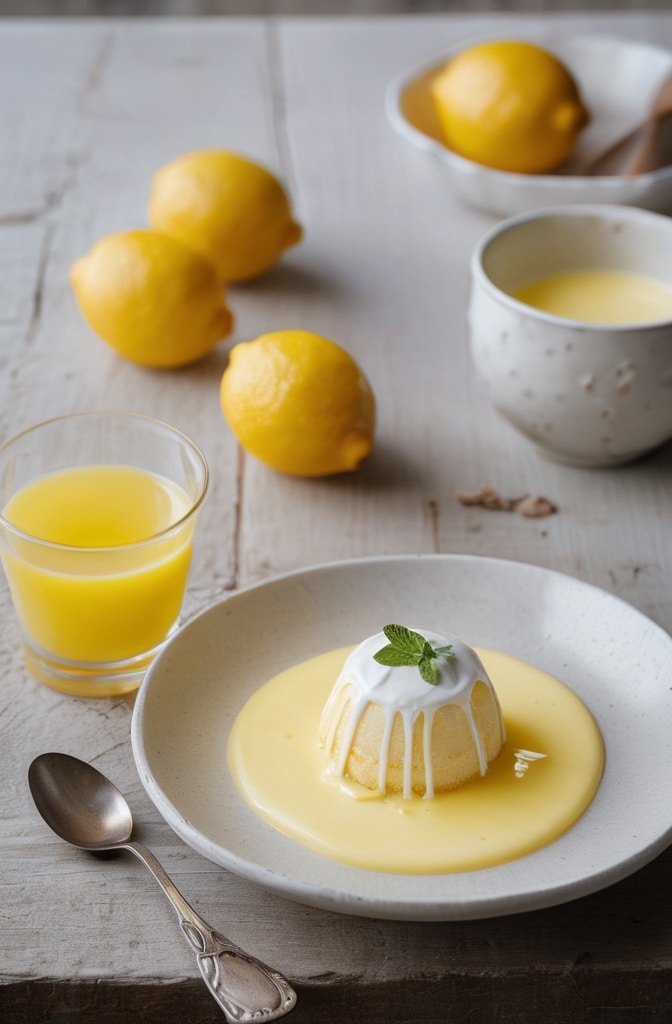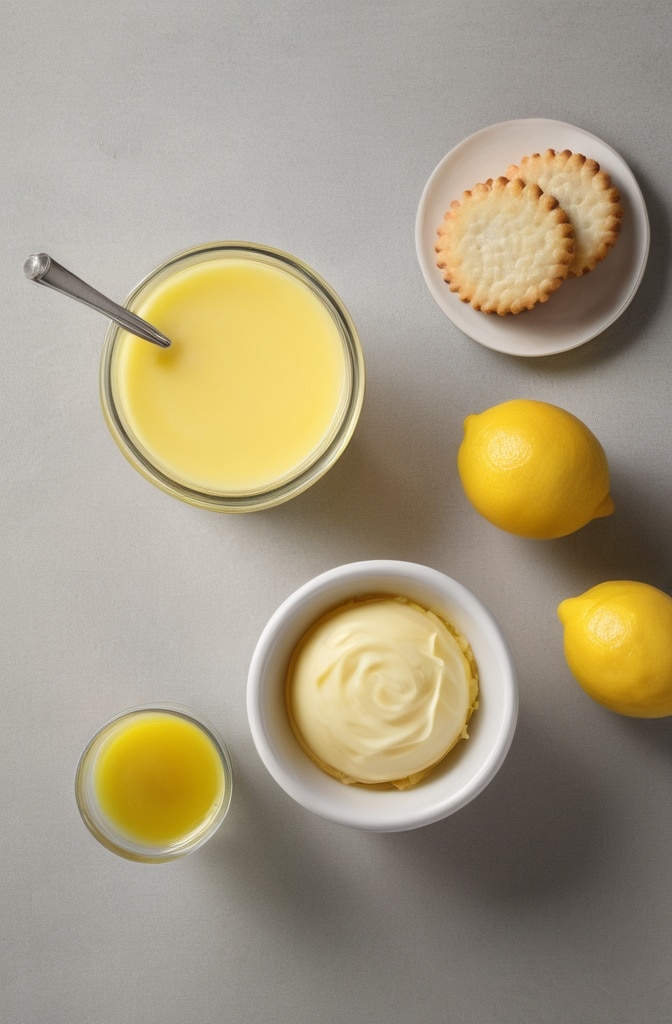The first time I tasted authentic Citrusy Lemon Limoncello was on the Amalfi Coast, perched on a terrace overlooking the Mediterranean. The locals handed me a frosty glass of golden liquid that captured the very essence of their sun-drenched lemons. That Citrusy Lemon Limoncello changed everything I thought I knew about citrus. Trust me, once you’ve crafted your own Citrusy Lemon Limoncello, you’ll never look at those bright yellow orbs the same way again.
Limoncello isn’t just a digestif—it’s liquid sunshine. This Italian lemon liqueur traditionally hails from Southern Italy, particularly the regions around the Gulf of Naples, the Sorrentine Peninsula, and the Amalfi Coast. What makes it special? The alchemical transformation of simple ingredients into a complex, aromatic elixir that balances sweetness with vibrant citrus notes. Our version elevates the classic by incorporating advanced techniques and flavor principles that create exceptional depth and a silky mouthfeel that commercial versions simply cant match.
Ingredients & Substitutions
For the Base Limoncello:
- 10-12 organic, unwaxed lemons (preferably Sorrento, Meyer, or Eureka varieties)
- 750ml high-proof neutral grain spirit (vodka or grain alcohol, 80-95% ABV)
- 2½ cups granulated sugar
- 3 cups filtered water
- 1 vanilla bean, split lengthwise (optional)
For the Citrusy Enhancement Layer:
- Zest of 2 organic oranges
- 1 tablespoon pink peppercorns, lightly crushed
- 3 sprigs fresh thyme, washed and dried
- 1 inch piece of fresh ginger, thinly sliced
- 1 tablespoon honey (preferrably acacia or wildflower)
When selecting lemons, organic is non-negotiable here. Conventional lemons are treated with waxes and chemicals that’ll taint your infusion. Look for bright, heavy fruits with tight, aromatic peels. The oils in the zest create magic in this recipe, so quality matters tremendiously.
For those concerned about alcohol content, you could substitute the high-proof spirit with 100-proof vodka, though this will yield a milder flavor and slightly icier consistency when frozen. Health-conscious folks might opt for raw turbinado sugar or even monk fruit sweetener, though the latter will produce a noticeably different flavor profile and mouthfeel.
Step-by-Step Instructions

Part 1: Preparing the Lemon Infusion
- Thoroughly wash your lemons in warm water, gently scrubbing with a vegetable brush to remove any residue. Dry them completely with a clean kitchen towel.
- Using a sharp vegetable peeler or microplane, carefully remove only the yellow zest from the lemons, avoiding the bitter white pith underneath. This is the most crucial step—any pith will introduce bitterness that’s nearly impossible to correct later. Work slowly and deliberately here.
- Place the zest in a large glass jar with an airtight seal, add the neutral spirit, and seal tightly. Store in a cool, dark place for at least 1 week and up to 30 days, swirling (not shaking) the mixture every couple of days. The longer you infuse, the more intense the lemony flavor becomes—I find 14 days hits the sweet spot for depth without developing any bitter notes.
The infusion process is where alchemy happens. As the days pass, you’ll notice the alcohol turning a beautiful sunny yellow as it extracts the essential oils from the zest. Around day 10, you might see the zest beginning to lose its vibrant color—thats when you know the extraction is working perfectly.
Part 2: Creating the Sugar Syrup
- In a medium saucepan, combine the sugar and water. Bring to a gentle simmer over medium heat, stirring occasionally until the sugar completely dissolves, about 5-7 minutes. Don’t allow the mixture to boil vigorously—we’re not making caramel here!
- If using the vanilla bean, add it to the hot syrup, remove from heat, cover, and let steep for 30 minutes. The vanilla adds subtle depth that complements the citrus without competing.
- Allow the syrup to cool completely to room temperature. Attempting to combine hot syrup with the alcohol infusion is a recipe for disaster that’ll evaporate those precious aromatic compounds we’ve worked so hard to extract.
Part 3: The Enhancement Layer
- Two days before finishing your limoncello, add the orange zest, pink peppercorns, thyme sprigs, and ginger slices to the lemon infusion. This secondary infusion creates subtle complexity that distinguishes a good limoncello from an extraordinary one.
- After 48 hours, strain the entire mixture through a fine-mesh sieve lined with cheesecloth or a coffee filter. Press gently on the solids to extract all the liquid without forcing through any particulates that could cloud your final product.
- Stir in the honey until completely incorporated—this adds a delicate floral note and contributes to the silky texture of the finished liqueur.
Part 4: Finishing Your Limoncello
- Gradually whisk the cooled sugar syrup into the strained lemon infusion. The mixture may become cloudy—this is completely normal and actually desired, indicating the essential oils are properly emulsified.
- Using a funnel, transfer the finished limoncello into sterilized glass bottles, leaving about an inch of headspace. Seal tightly and let rest at room temperature for 3-5 days to allow the flavors to marry and mellow.
- Move the bottles to the freezer for storage. Limoncello won’t freeze solid due to its alcohol content, and serving it ice-cold highlights its refreshing character while tempering the alcohol’s heat.
A common mistake is rushing the final resting period. Those few days of integration transform the limoncello from a three-piece band into a symphony. Be patient—your reward is a far more harmonious final product.
Cooking Techniques & Science
The magic of limoncello lies in the extraction of essential oils from the lemon zest. These oils, primarily limonene and citral, are soluble in alcohol but not in water. The high-proof spirit acts as a solvent, drawing out these compounds that give limoncello its characteristic aroma and flavor.
Temperature plays a critical role in this process. Room temperature allows for efficient extraction without driving off volatile compounds. This is why we never heat our alcohol mixture and add the syrup only after it has completely cooled.

The science behind the cloudy appearance (known as the “louche effect”) is fascinating. When water from the sugar syrup is added to the alcohol infusion, the essential oils become less soluble and form a microemulsion—tiny droplets suspended in the liquid. This creates both the characteristic cloudiness and the silky mouthfeel that makes exceptional limoncello so luxurious.
Our secondary infusion with complementary botanicals works on the same principle, but adds layers of flavor through compounds like gingerol from the ginger and thymol from the thyme. These integrate with the citrus oils to create a more complex flavor profile thats greater than the sum of its parts.
The traditional serving vessel for limoncello—small, pre-chilled glasses—is no accident. These maximize the aromatic experience while the freezer-cold temperature temporarily numbs taste buds to alcohol, emphasizing the citrus flavors instead. Proper glassware isnt just about aesthetics; it fundamentaly effects the tasting experience.
Serving & Pairing Suggestions
Limoncello is traditionally served as a digestif in Italy, enjoyed after dinner in small, frosty glasses (about 1-2 oz per serving). The intense cold mutes the alcohol burn while highlighting the bright lemon character.
For a contemporary presentation, serve in chilled shot glasses with a twist of lemon zest expressed over the surface to release aromatic oils. Alternatively, serve in small cordial glasses alongside a plate of Italian cookies like amaretti or biscotti for a classic pairing that’ll transport you straight to an Italian piazza.
Beyond the traditional service, our enhanced limoncello opens up exciting culinary applications:
- Drizzle over vanilla gelato or lemon sorbet for an elegant dessert
- Add a splash to prosecco for a sophisticated aperitif
- Incorporate into a vinaigrette for seafood salads (1 part limoncello to 3 parts olive oil, with a touch of mint)
- Use as a flavoring in pound cake or ricotta cheesecake
- Create a glaze for grilled fish by reducing limoncello with a touch of butter
For an impressive dinner party finale, try the “Sgroppino al Limone”—a semi-frozen cocktail from Venice that blends limoncello with lemon sorbet and prosecco. It’s sophisticated, refreshing, and the perfect showcase for your house-made limoncello.
The versatility of this enhanced limoncello extends to savory applications too. Try deglazing a pan after sautéing scallops with a small splash—the caramelized seafood notes marry beautifully with the citrus complexity.
Conclusion
Crafting your own Citrusy Lemon Limoncello Delight is more than a culinary project—it’s an exploration of flavor extraction, patience, and the transformative power of time. The beauty of this recipe lies in its simplicity paired with attention to detail.
The enhanced version we’ve created here delivers remarkable complexity while honoring traditional methods. The addition of complementary botanicals elevates the flavor profile without overwhelming the essential lemon character that makes limoncello so beloved.
Remember that quality ingredients matter tremendously in preparations with so few components. Your limoncello will only be as good as the lemons you begin with, so seek out the freshest, most aromatic fruit you can find.
For gifting, consider decorative bottles with handwritten labels—homemade limoncello makes an impressive present that showcases your culinary sophistication. Just be sure to note the high alcohol content for recipients!
The true test of exceptional limoncello isn’t just its flavor—it’s the way it captures and preserves a moment, much like that unforgettable evening on the Amalfi Coast where my appreciation for this liquid sunshine began. Your homemade version will likewise become a time capsule of the season and care with which you crafted it.
FAQs About Citrusy Lemon Limoncello Delight
How long will homemade limoncello keep?
Properly sealed and stored in the freezer, your limoncello will maintain optimal flavor for up to a year. The high alcohol content acts as a preservative, though the vibrant color may gradually fade over time. I recommend consuming within 6 months for the best flavor profile, especially with our enhanced version containing fresh botanicals.
Can I use bottled lemon juice instead of fresh lemons?
Absolutely not! Limoncello derives its character entirely from the essential oils in the lemon zest, not the juice. Bottled juice would create an entirely different (and inferior) product. The magic is in the aromatic compounds found in the colorful outer peel.
Why did my limoncello separate after a few weeks in the freezer?
This occasionally happens when the proportion of water to alcohol isn’t balanced correctly. To fix it, simply remove from the freezer, allow to come to room temperature, and shake gently to reincorporate. In future batches, ensure your sugar syrup is completely cooled before mixing and consider adding 1 tablespoon of glycerin (available at specialty baking shops) as a stabilizer.
Is it necessary to use such high-proof alcohol?
While you could use standard 80-proof vodka, higher-proof spirits (151-proof or higher) extract more of the essential oils from the citrus peels, resulting in a more intensely flavored limoncello. If using lower-proof alcohol, consider extending your infusion time by an additional week and reducing the amount of sugar syrup slightly to maintain the proper balance.
Can I make limoncello with other citrus fruits?
Absolutely! The same technique works beautifully with other citrus varieties. Try “arancello” with oranges, “mandarinello” with mandarins, or “pompelmocello” with grapefruit. Each creates a distinctly different flavor profile while following the same extraction principles. For an exciting variation, combine lemon zest with kaffir lime leaves for an intriguing Southeast Asian twist.

